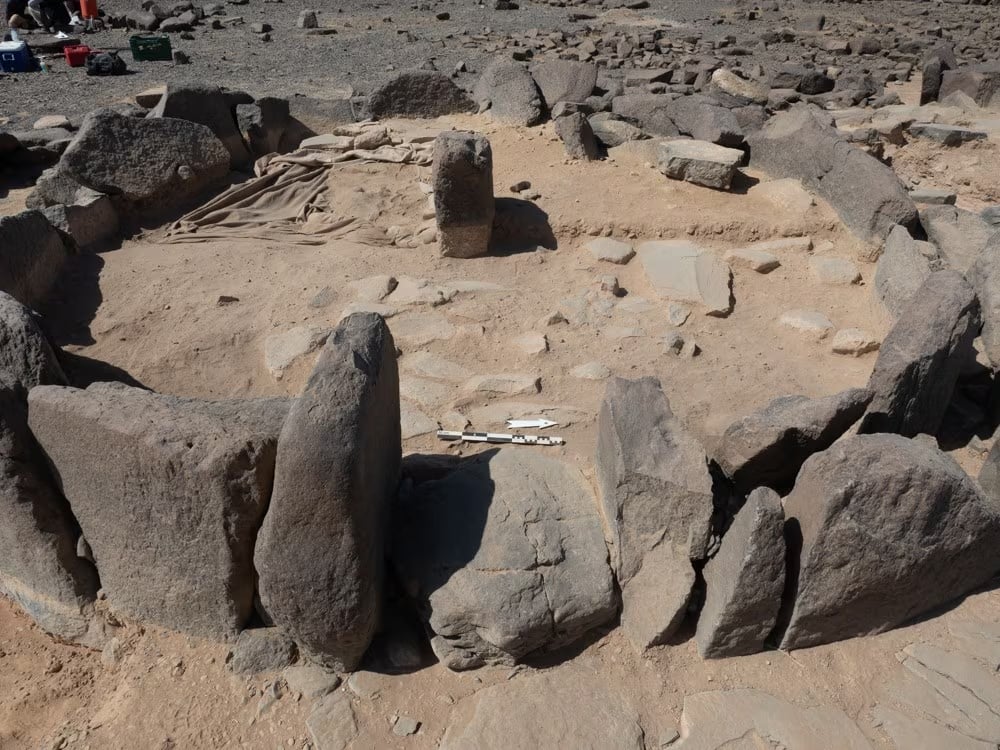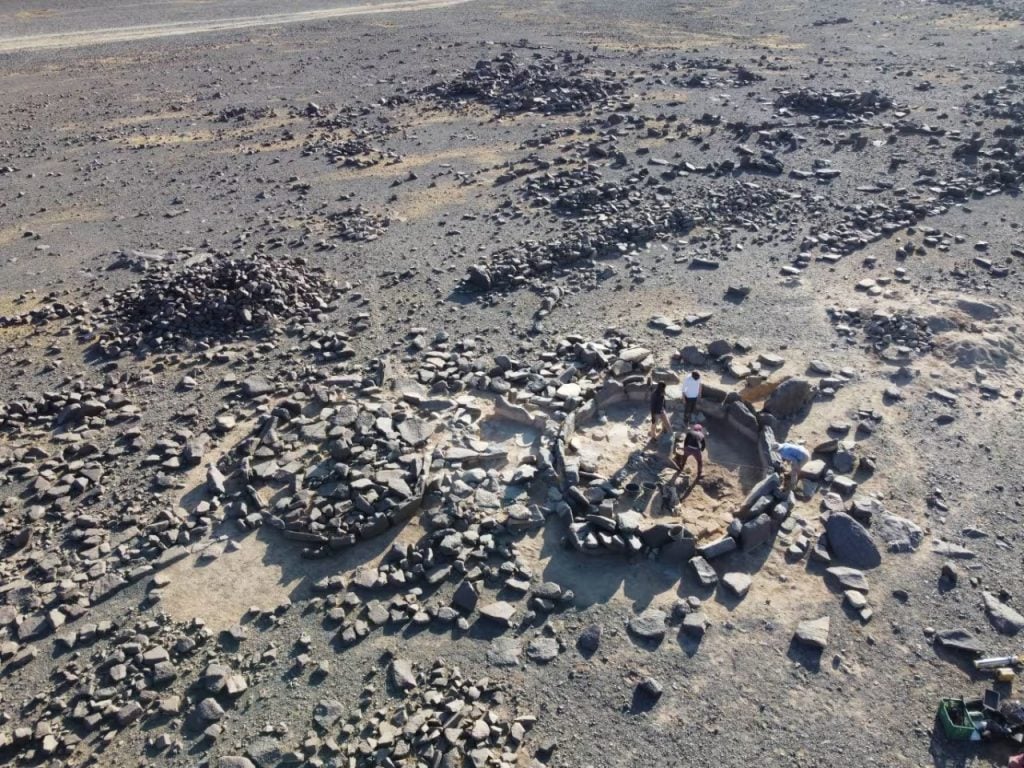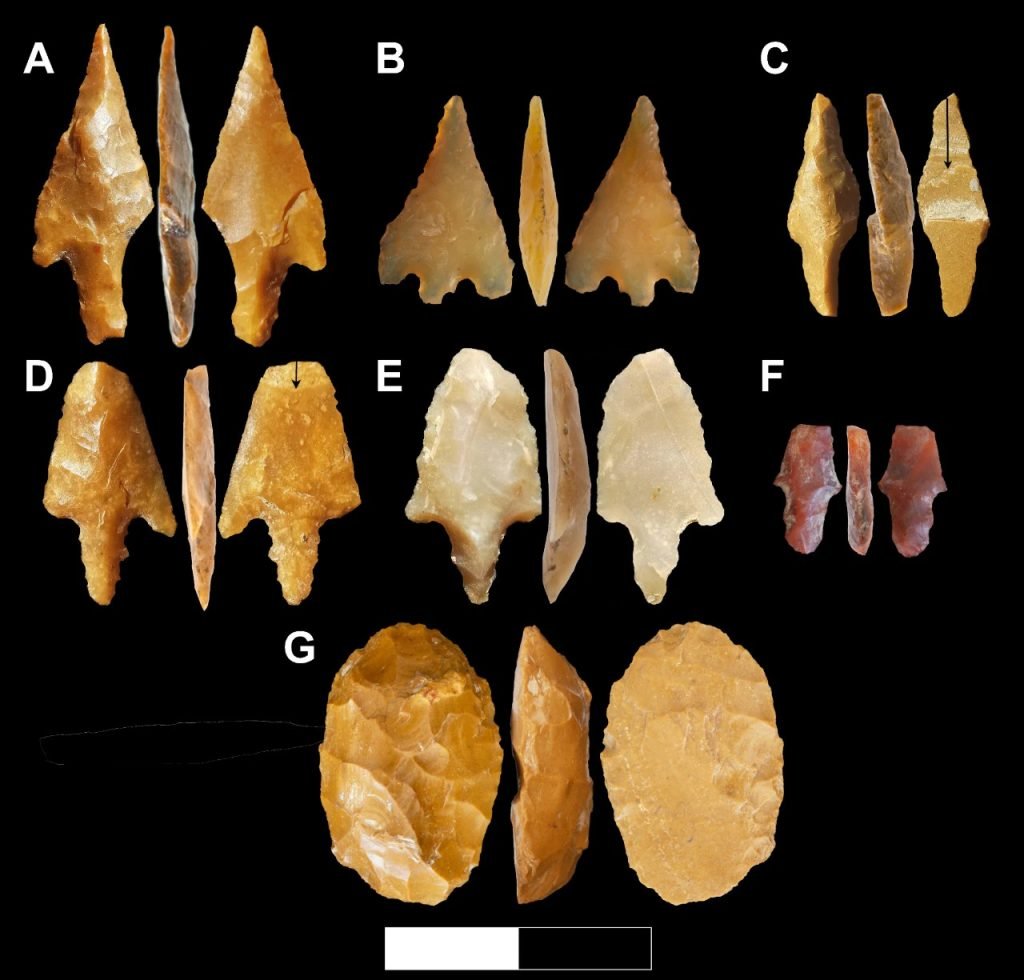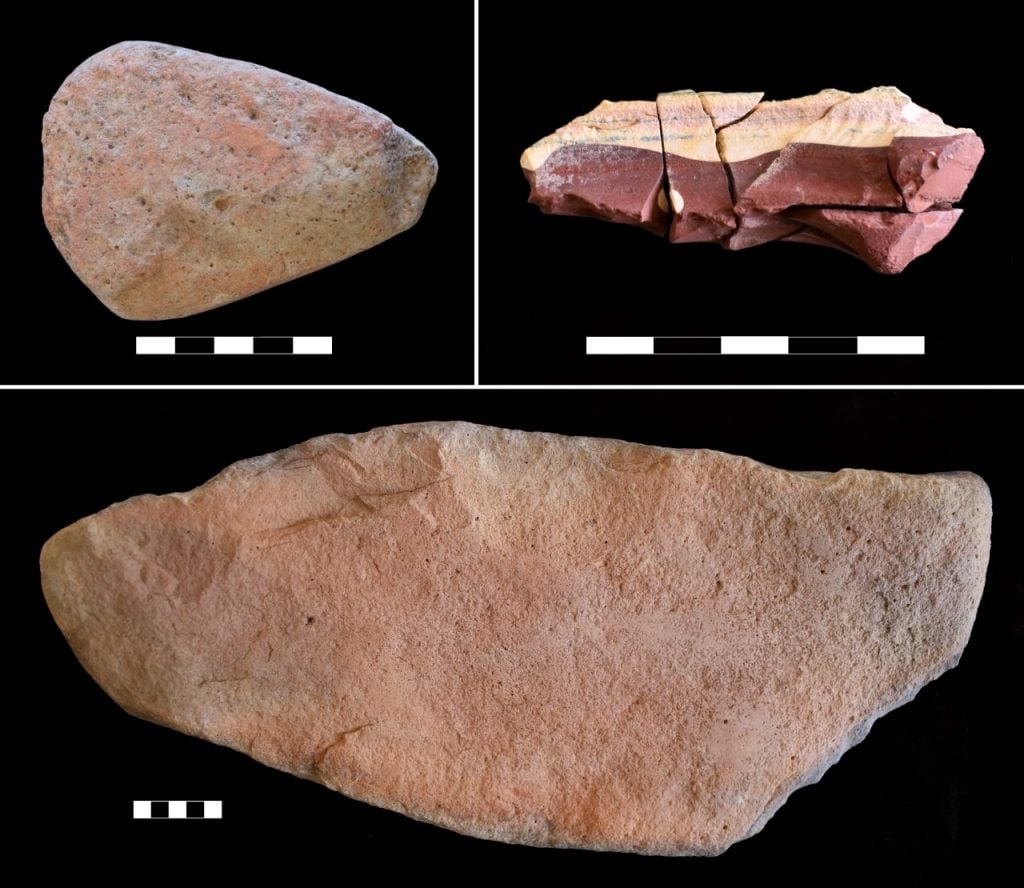Archaeology & History
Hundreds of 7,000-Year-Old Standing Stone Circles Discovered in Saudi Arabia
These structures acted as shelters that could be easily disassembled.

In the popular imagination, Neolithic stone circles conjure images of mysterious rituals presided over by our rugged, club-wielding ancestors.
This is a gross misconception, according to Jane McMahon, a University of Sydney archaeologist, who has recently published groundbreaking research in Levant on the standing stone circles across Harrat Uwayrid, the sprawling lava fields of northwestern Saudi Arabia.
For starters, somewhat irrespective of geography, early Neolithic architecture was consistently round and had a domestic function. Furthermore, in the case of Harrat Uwayrid, it’s the rectangular structures, later developments known in Arabic as mustatil, that are connected with ritual activity, such as animal sacrifices.

An aerial view of some standing stone circles. Photo: courtesy RCU/ University of Western Australia/ University of Sydney.
Previously, little was known about the peoples who inhabited the region 8,000 years ago, in part due to the remote region’s inhospitable terrain. The assumption was that small groups had led a nomadic hardscrabble existence. New research, however, shows that large-scale human activity flourished in the area of basalt and desert for more than 1,000 years.
Over the past five years, Australian researchers backed by Saudi Arabian cultural funding have surveyed the landscape by helicopter and drone identifying more than 400 architectural structures. Eleven of these have now been excavated, revealing what the inhabitants ate, the kinds of tools they used, and some of the practices they adopted.
“It leads us to think these people weren’t struggling so much after all,” McMahon wrote, “but rather had found complex and strategic ways to thrive on the land.”

A selection of small chert artefacts including arrowheads and a scraper. Photo: courtesy RCU/ University of Western Australia/ University of Sydney.
Archaeological evidence shows the standing stone circles supported a range of activities including tool-making, cooking, eating, and presumably sleeping. Varying in size from 13 to 26 feet wide, the shelters were formed of two concentric rows of large stones with the gap in between supporting a timber armature. The structures were enclosed, researchers think, with a patchwork of animal skins.
The structures epitomize the life these semi-nomadic peoples led: carefully crafted and returned to time and again for hundreds of years, but also easy to disassemble and move. Onsite, archaeologists found arrowheads made of chert and grindstones used for crushing plants and pigments.

Grindstones and mullers used for crushing pigment and plants. Photo: courtesy RCU/ University of Western Australia/ University of Sydney.
Although the region was considerably wetter than today, the range of animal bones and plants discovered evidence of a resilient people who were constantly responding to environmental changes. Gazelle and bird bones were excavated in addition to those of domestic animals such as goats and sheep.
The presence of such non-native animals is one of several examples, such as Red Sea shells, that point to the site’s connection with territories further afield.
“Our findings suggest they imported their animals and stone tool technologies,” McMahon wrote. “Some of the tools resemble those found at earlier sites across Jordan, which suggests they either traded or learned how to make them from further north.”
One theory runs that these peoples of northwestern Arabia migrated from modern-day Jordan after new hunting techniques prompted large population increases. Similar standing stone circle structures can be found in Jordan.
“Our work is just beginning to fill in the gaps of what life was like in north-western Arabia,” helping reintroduce it—and its people—into the picture of the wider region,” McMahon wrote.





